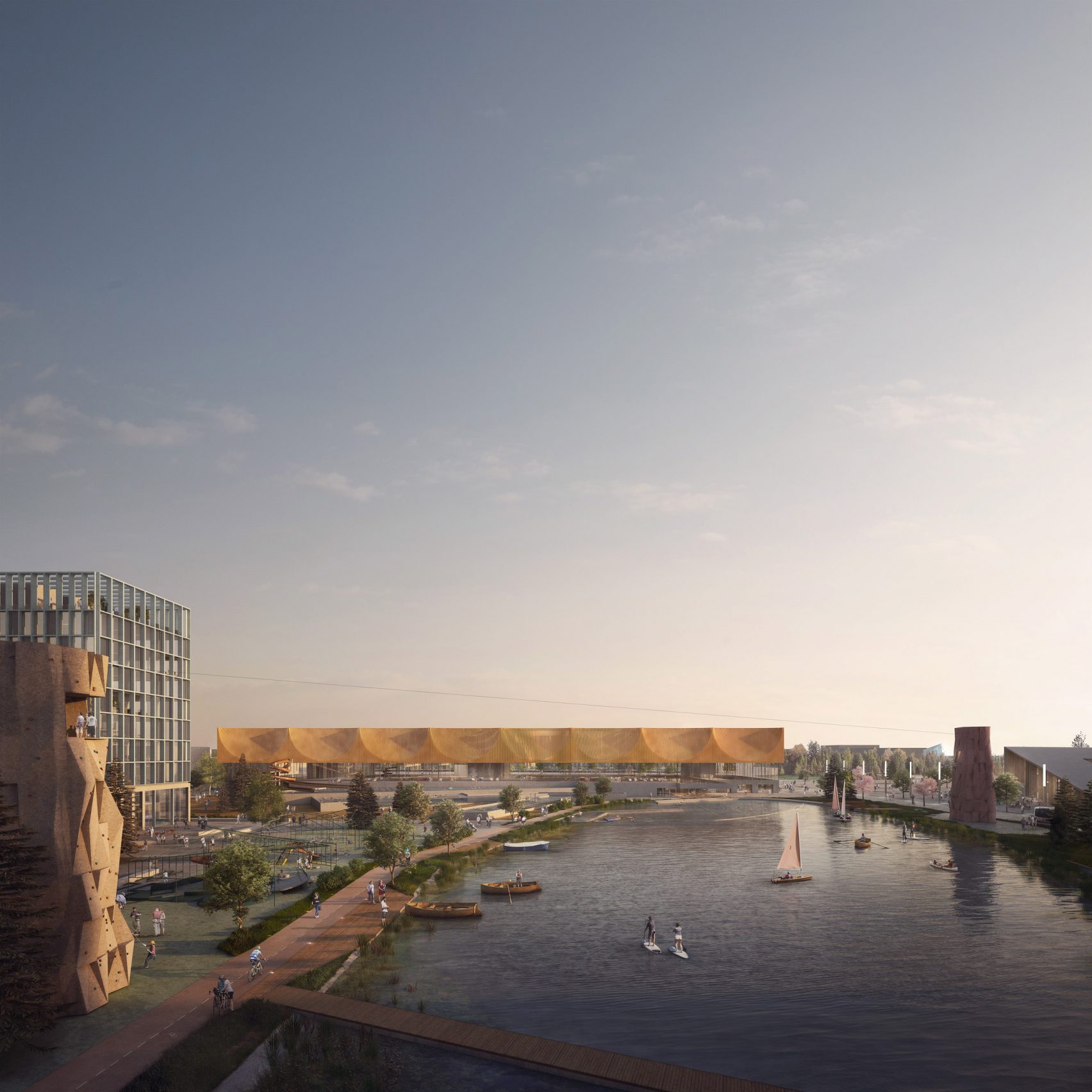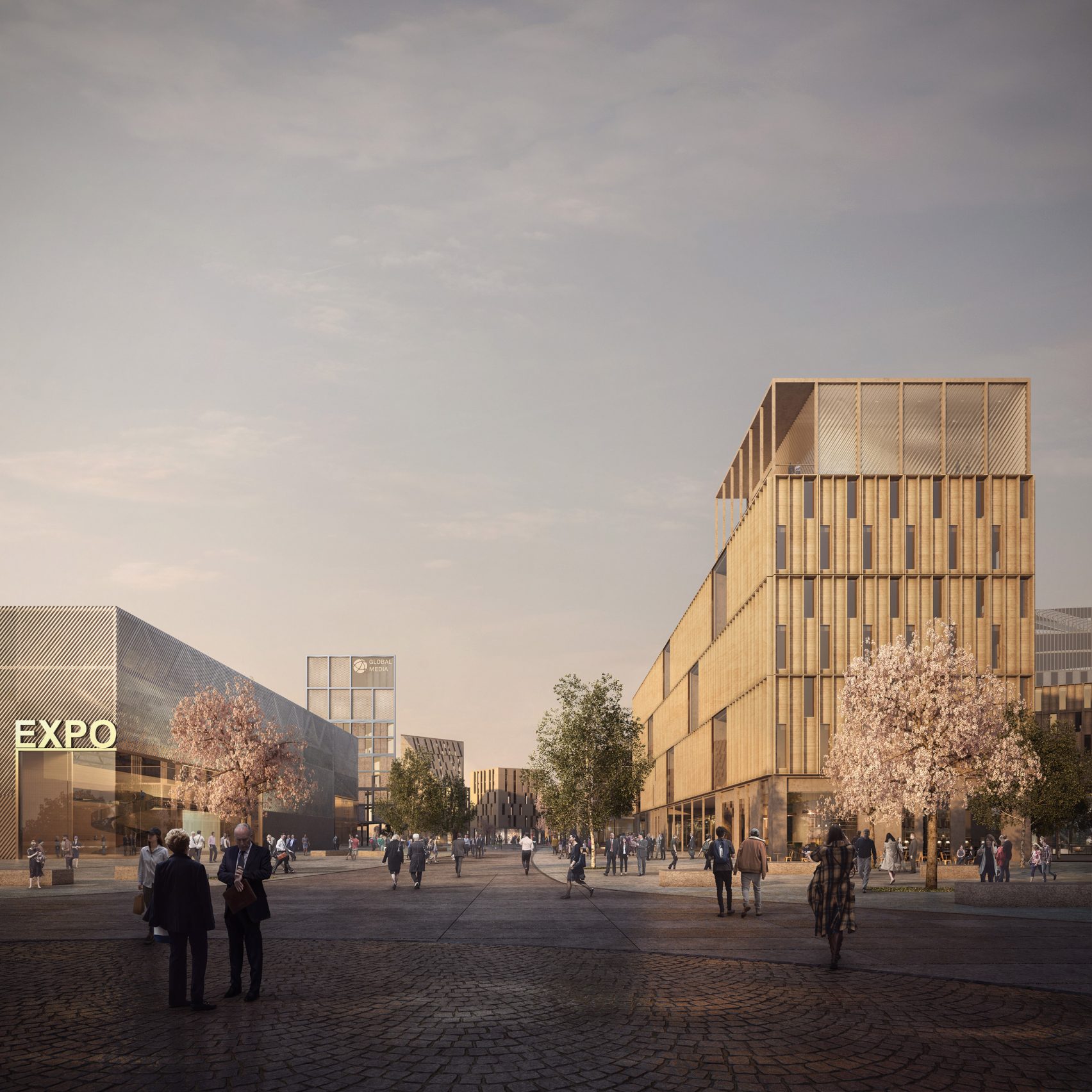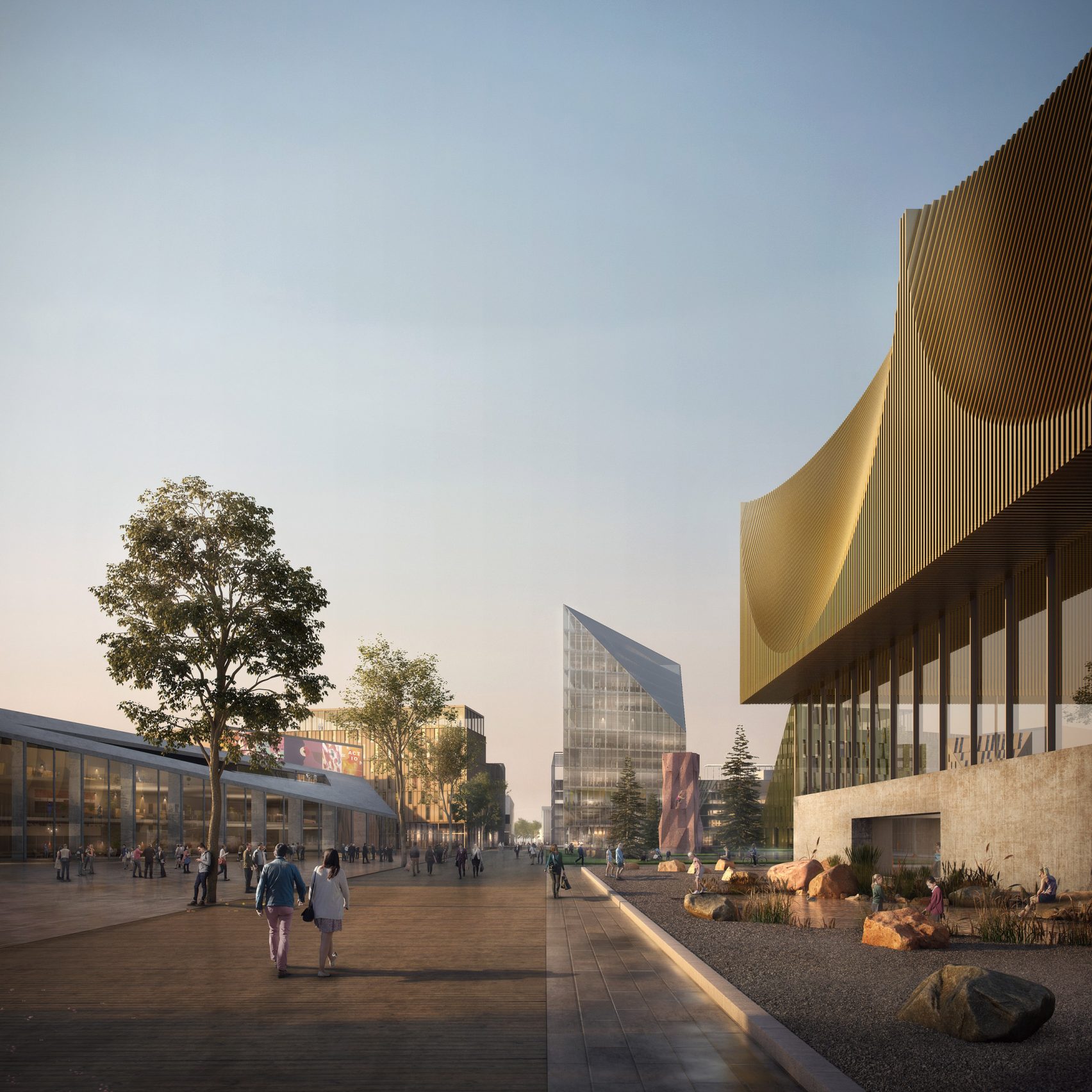
Due to their large size and dynamic mode of operation, airports are extremely heavy energy consumers. In recent years, there has been an increased interest in sustainability and energy reduction in the aviation sector, but few measures have been as extensive and ambitious as Norway’s.
Their recently announced plans for a sustainable, smart city near the country’s major airport seeks to be the testing ground for the kind of technology-driven, green municipalities that may represent the future of airport city development.
Designed by Norwegian practices Haptic Architects and Nordic Office of Architecture, and inspired by the Norwegian government’s plan to move from oil use to green energy, the Oslo Airport City (OAC) is set to occupy 4-million-square-metres of space near Oslo Airport. Envisioned as an ‘energy positive’ area that would have the capacity to sell surplus energy to surrounding buildings, communities and cities, OAC would be the first of its kind in the world.

"This is a unique opportunity to design a new city from scratch," director of Haptic Architects, Tomas Stokke, explained in a statement. "Using robust city planning strategies such as walkability, appropriate densities, active frontages and a car-free city centre, combined with the latest developments in technology, we will be able to create a green, sustainable city of the future."
With the intention to become a fully livable city, OAC will be entirely powered by renewable energy and every car within the city will run on electricity. In addition to this, its developers have also promised that, through their inclusion of high-speed light rails within the city’s design, residents will never be more than five minutes away from access to public transport.
Other features that will keep the city’s carbon emissions low include auto-lighting for the streets and buildings, and smart-tech waste and security management.

Though OAC will feature specially designed business facilities, the country’s passion for sports and outdoor activities was also given consideration when developing the plans. For this reason, a public park, in addition to the traditional cargo and business hub, will be included, along with sufficient green spaces for the airport’s growing workforce, which is expected to increase from 22,000 to 40,000 people by 2050.
The developers of OAC estimate that the city will take around 30 years to complete. With construction set to begin in 2019 or 2020, developers expect the first buildings to be completed by 2022.




